Overthinking the draft, curbing deadline enthusiasm, and 7 more observations
Starting Lineup is a biweekly collection of reporting, observations, and insights from the baseball beat, published every other week during the regular season.
Leading off …
The consensus is that this weekend's Major League Baseball draft is top-heavy and rich in college bats.
Some evaluate the top tier as being 8-10 deep. Others believe two of those college bats stand above the rest: Georgia's Charlie Condon and Oregon State's Travis Bazzana.
The Cleveland Guardians own the first pick. Some league executives expect Cleveland to target the player most willing to take a discount on his draft bonus. The Guardians are believed to be high on West Virginia shortstop JJ Wetherholt despite his hamstring injury issues this year.
"I would take Bazzana, but I think the Guardians will take Condon or Wetherholt because those guys are more likely to cut a better deal," one rival assistant general manager says.
Trying to save bonus-pool dollars at the top of the draft to spend them in later rounds is an increasingly popular strategy.
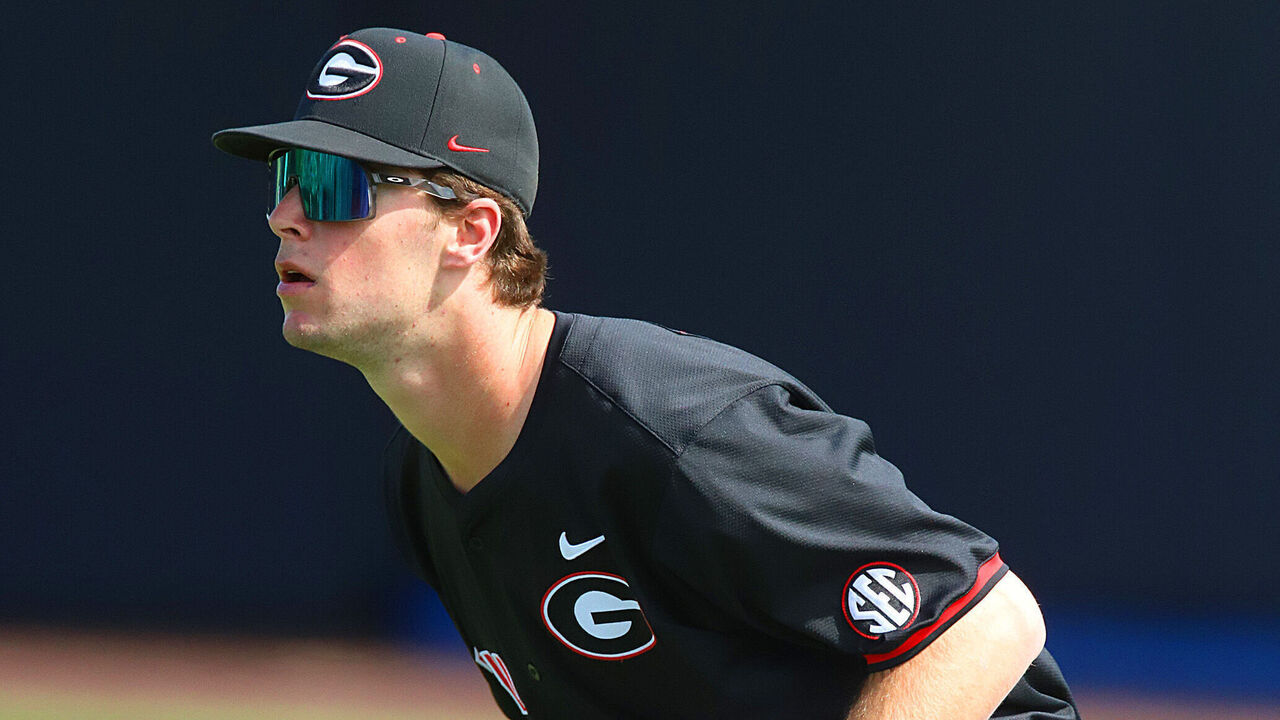
The Houston Astros executed the plan well in the 2012 draft when they agreed to a $4.8-million deal with No. 1 pick Carlos Correa. The first pick that year carried a $7.2-million slot value. Byron Buxton, the top prospect on many boards, went second and signed for $6 million. The Astros used those savings to later draft high school pitcher Lance McCullers.
Correa has accumulated the most wins above replacement in the class to date (44.2), and McCullers chipped in another 11.1 bWAR.
The idea with this approach is that the draft is so inexact, it's best to spread resources as much as possible.
But there's a risk in overthinking with this approach. Some draft observers argue the Guardians have so much pool money this year, a record $18.3 million, that they shouldn't be too cute with early strategy and just take the top talent. That is especially true in a top-heavy draft. (The bonus slot for the No. 1 pick alone is $10.57 million. If teams spend more than their total bonus allotment, they're penalized.)
While the draft isn't a precise talent-acquisition mechanism, talent is generally concentrated at the top. In draft history, the 55 No. 1 picks average 21.1 career bWAR.
The No. 1 spot has returned 42% more WAR value than the No. 2 pick, which owns an average of 14.8 career WAR.
The pick averages don't show a perfect downhill slope - Mike Trout helped raise the 25th overall selection to a 7.4 WAR average compared to a 4.3 mark for the 24th pick - but the draft production chart does decline, according to a Journal of Sports Analytics study.
The first overall selection is a team's best chance at finding a homegrown future star in the draft. A small-budget team like Cleveland shouldn't squander the opportunity.
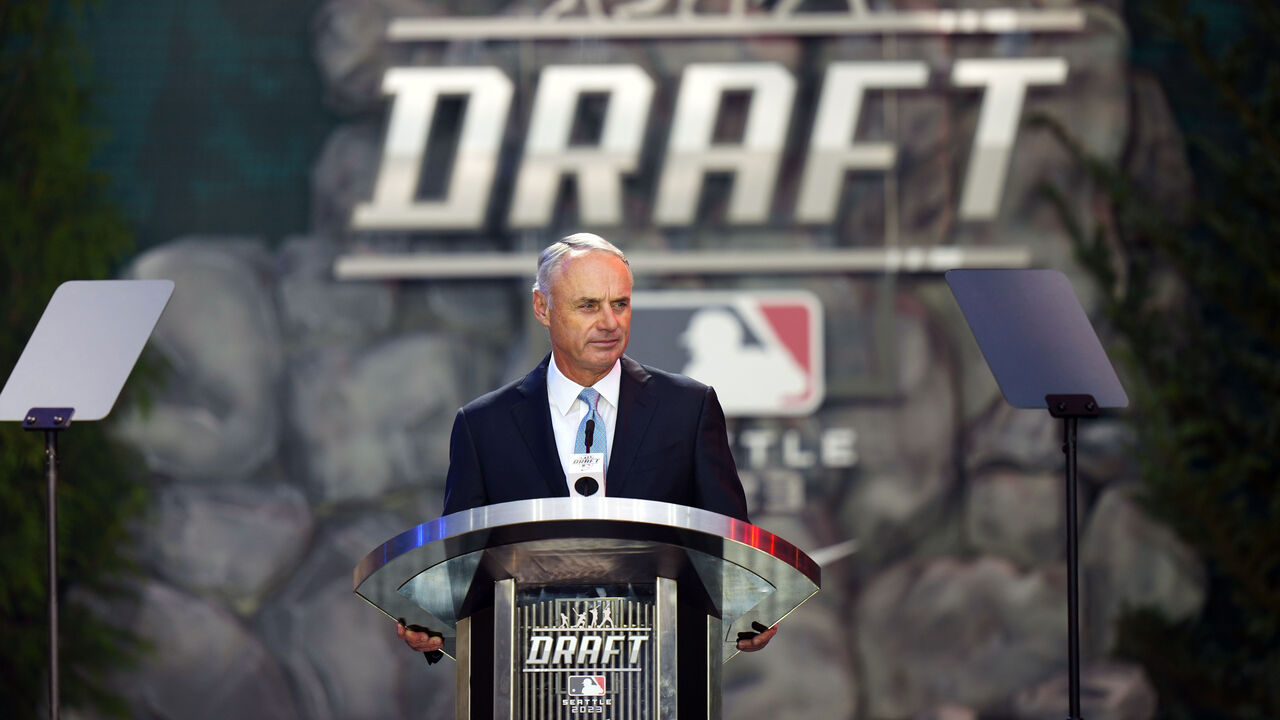
2. Who is No. 1?
Condon sits atop many draft boards, and for good reason: He owns prodigious power, smashing a Division I-best 37 home runs this year. He achieved this in arguably the top college conference. Condon led the country in OPS and slugging. He won the Golden Spikes Award, given to the top college player.
While exit velocity produced with college bats isn't apples-to-apples compared to wood, he reached an elite 118 mph in exit velocity. The right-handed OF/3B is a massive presence at the plate: 6-foot-6 and 220 pounds with room to add even more weight. His upside is a Giancarlo Stanton-type slugger or a healthy Kris Bryant.
Others prefer the left-handed-hitting Bazzana. He owns plenty of power himself, hitting 28 homers this year with plenty of bat speed.
TRAVIS BAZZANA SOMEHOW KEEPS THIS FAIR 💣
— 11Point7 College Baseball (@11point7) June 2, 2024
He is a special special talent. Have no clue why teams continue to pitch to him 😂 pic.twitter.com/TDy0D9n1g9
Listed as a 6-foot, 199-pound second baseman, there might not be much room for physical projection - if he's already closer to his ceiling, it still might be a lofty one. He was named MVP of the wood-bat Cape Cod League last summer. While he doesn't have the frame of Condon or some first-base sluggers expected to go early like Jac Caglianone and Nick Kurtz, Bazzana owns the best contact skills and swing decisions among the sluggers. He finished second in Division I in on-base percentage, with twice as many walks (76) as strikeouts (37).
Bazzana also owns elite baseball makeup. He pushed to get the most out of his talent by training at Driveline Baseball. He's mastered lofting the ball in the air to his pull side and taught teammates at Oregon State about innovative training and analytical concepts. Bazzana offers a high floor, a middle-of-the-infield glove, and less swing and miss than the other top college bats.
It's close, but give me Bazzana.
3. Silver lining for the Jays
Just about everything that can go wrong has gone wrong for the Toronto Blue Jays this season. Look no further than Tuesday night's ninth-inning meltdown which cost them, and Yusei Kikuchi, a win. Kikuchi had been dominant, striking out 13 with no walks.
If the Blue Jays weren't already committed to selling, particularly their players on expiring deals, that should seal it. They opened play Friday seven games under .500.
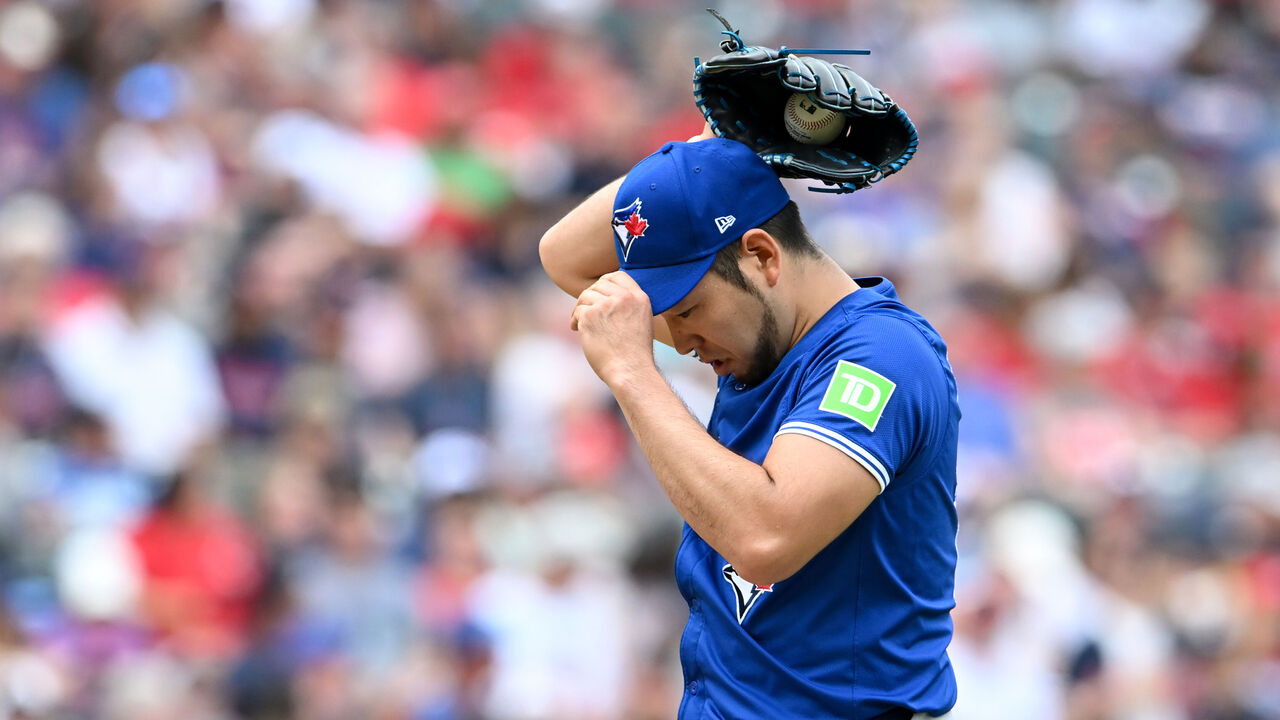
The one bit of good news for the Jays in this miserable season is this: "It's a seller's market," according to one rival scout.
Kikuchi figures to be one of the better starting options available to contenders behind White Sox ace Garrett Crochet. Yimi García can help any team's bullpen if healthy, and Danny Jansen could upgrade some catching situations. The Blue Jays have attractive short-term pieces who could fetch great returns in a seller's market.
Within the last decade at the deadline, the Houston Astros received Yordan Alvarez for reliever Josh Fields, the Padres received Fernando Tatis Jr. for James Shields, the Pittsburgh Pirates acquired Oneil Cruz for left-handed reliever Tony Watson. Those were among the major wins. What did the prospects all have in common? They were teenagers.
For the Blue Jays to maximize their return as a seller, they must think long term about the prospects they acquire.
4. Curb your deadline enthusiasm
On the buyer's side, it's the most dangerous time of year.
When I was on the Pittsburgh Pirates beat in the mid 2010s, I can still recall general manager Neal Huntington say this following a muted trade deadline period: "We were willing to do something stupid, we just weren't willing to do something insane."
It's important to remember that teams can often do more harm than good at this time of year.
Leading into that deadline in 2014, there had been 47 trades in the previous two deadline periods. Of all the major-league players acquired, 25 produced negative WAR value for the acquiring club, 11 produced at least one WAR, and only two - Chase Headley (2.1) and Jarred Cosart (2.0) - produced at least two wins the rest of the way, according to Baseball Reference.

Not much changed in 2021, when theScore looked at the five-year trade return period for deadline deals and found median return was only 0.2 WAR for the acquiring team.
That doesn't mean contenders shouldn't try to improve - they just need to realize that any improvement will come at a cost, and it's imperative to avoid doing something "insane."
5. Act now
If a club is going to buy, it pays to do so earlier.
Consider the case of CC Sabathia and the 2008 trade deadline. The Milwaukee Brewers didn't wait, acquiring Sabathia from Cleveland on July 7 in a deal headlined by Matt LaPorta and Michael Brantley as a player to be named later. Sabathia went 11-2 with a 1.65 ERA for Milwaukee, and the Brewers won the wild-card spot by one game.
6. Who needs Crochet most?
The White Sox are years away from contention, and pitchers are high-risk assets. This is the perfect sell opportunity for a team in desperate need of young talent.
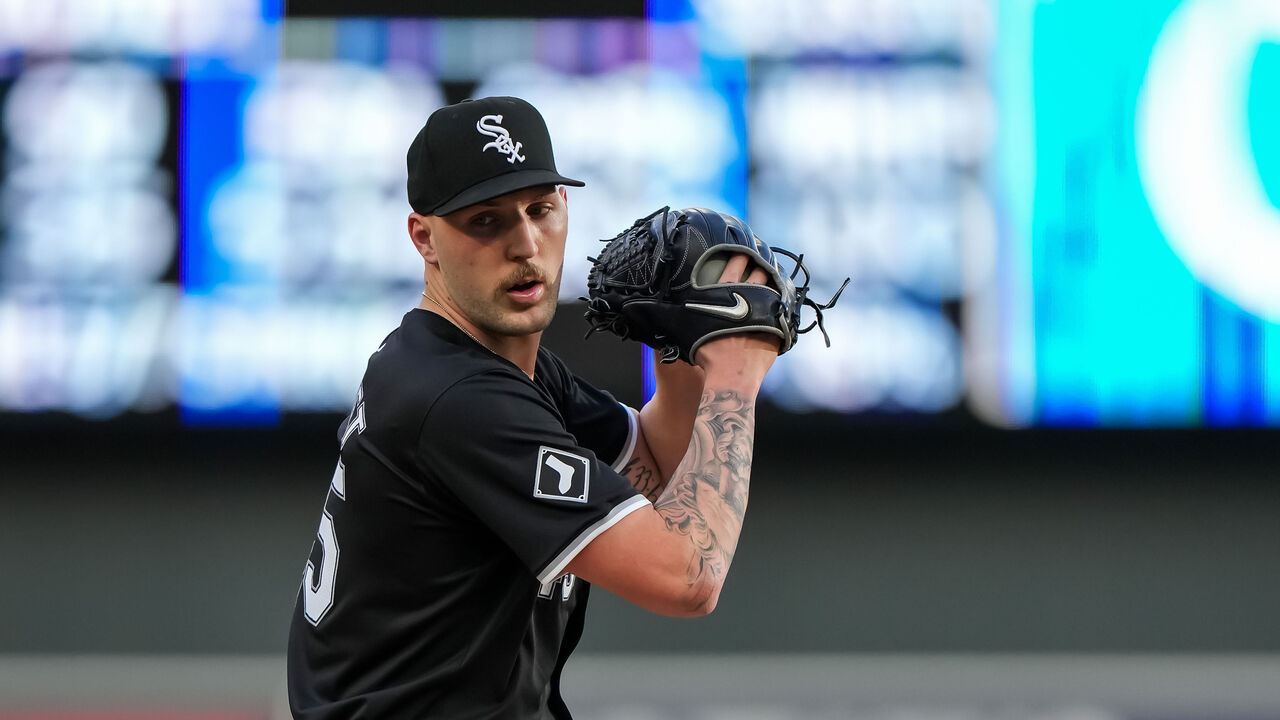
According to some MLB executives, Crochet is unlikely to be traded in the division because White Sox owner Jerry Reinsdorf is against the idea. That'd make sense if division rivals were in the same contention window, but the White Sox are in such a different situation than the rest of the AL Central that Reinsdorf's stance is nonsensical.
Where is Crochet most likely to land?
At the moment, no contender needs him more than the Los Angeles Dodgers. Co-aces Tyler Glasnow (lower back strain) and Yoshinobu Yamamoto (strained rotator cuff) are on the IL, and the team demoted top prospect Bobby Miller to the minors after a string of rough starts.
The Dodgers' rotation consists of James Paxton, Justin Wrobleski, and Gavin Stone. Anthony Banda started the bullpen game Thursday night in Philadelphia with Landon Knack throwing bulk innings.
7. The Yankees' bizarre season
One of the big questions surrounding the Yankees entering the season was what they'd get out of their starting rotation. In particular, how would they hold things together when Gerrit Cole's elbow began barking this spring?
Remarkably, the Yankees went 51-24 with a 3.04 staff ERA without Cole in the first half of the season.
Since his return? They're 5-14 with a 5.84 ERA entering play Friday. That's an MLB-worst ERA in that stretch. Baseball can be strange, and regression to the mean can be powerful.
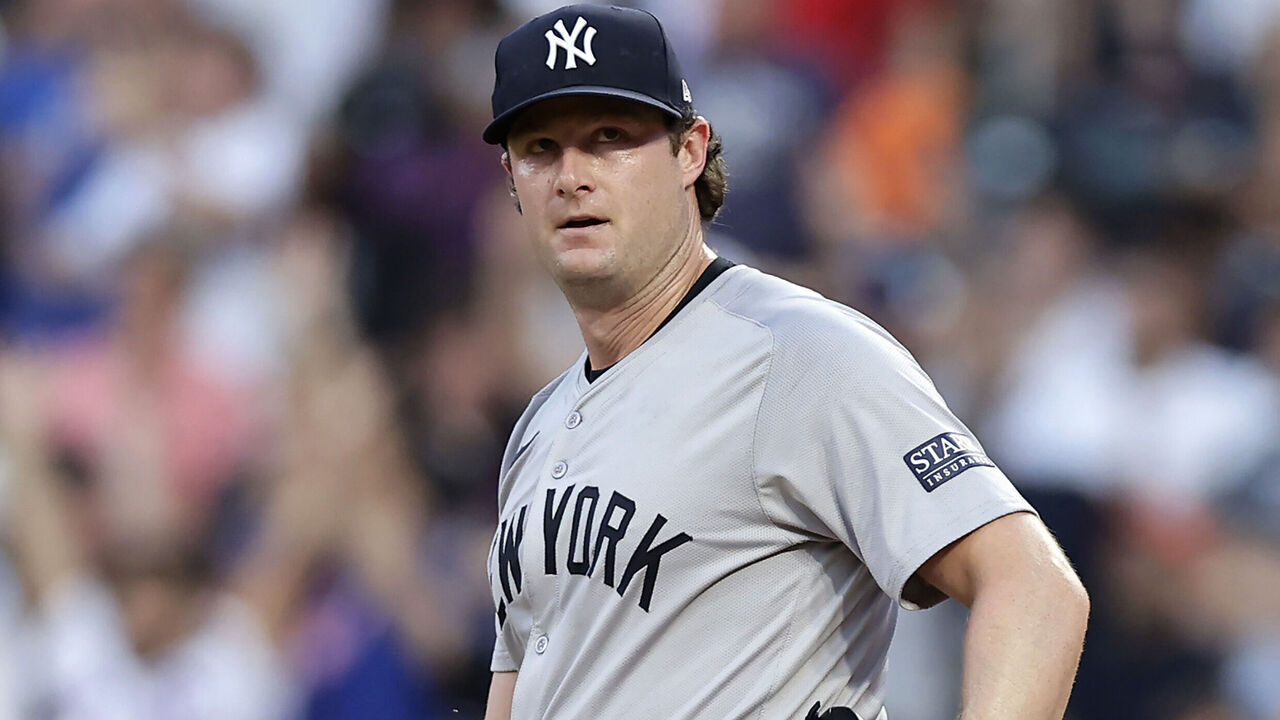
The other issue is the Yankees only have three players with 200 or more plate appearances and a 100 wRC+ or better: Aaron Judge, Juan Soto, and Giancarlo Staton, who's on the IL.
They desperately need Anthony Volpe to get back to his early-season production. He hasn't homered since May 18 and is batting .180 over the last month.
Alex Verdugo is a middling player to be occupying a corner outfield spot given his weak contact profile; DJ LeMahieu is batting just .202; and Anthony Rizzo was an offensive liability even before his injury. Gleyber Torres is hitting just .224.
Rookie Ben Rice is a promising young hitter who could usurp a healthy Rizzo, but Judge and Soto need more help.
8. You don't see this everyday
Up until July 5, there had been only one official pitch-out attempt to catch a runner leading off third base.
We don’t often see baserunners picked off at third base pic.twitter.com/ei6xQRSj2G
— Travis Sawchik (@Travis_Sawchik) July 6, 2024
On July 5, New York Mets catcher Francisco Álvarez alertly called for a pitch out and unleashed an accurate throw to third base. It’s not every day you see a major leaguer picked off at third base, and Michael A. Taylor will now be much more cautious when taking his lead from there. However, it's perhaps a throw over we should see more often as the electronic pitch-calling device, PitchCom, allows teams to create other calls - including pitchouts - in real time and communicate them more easily.
9. A better home
We'll close as we began: with the draft. Moving the draft to be part of the All-Star Game period was prudent for several reasons - from placing a greater spotlight on the event to allowing teams to evaluate full seasons of play.
But the new calendar placement is also much fairer to the players involved.
For example, when I was covering Clemson University athletics for Charleston's Post & Courier in 2010, the program's baseball team was playing in an NCAA Tournament elimination game against Auburn at the same time as the first round of the draft. Clemson's Kyle Parker was projected to be a first-rounder. Imagine the NFL draft taking place during the national title game.
Before the game, Parker, playing in right field, approached the fans in the bleachers and pleaded with them not to heckle him in one particular way: to not kid him about being drafted while he was on defense. I can't recall whether Auburn fans honored that request (they likely didn't). One could understand how that'd be distracting.
A cheer did go up from the Parker family in the eighth inning. He'd been selected in the first round by the Colorado Rockies. While that was quite a memory, it's better for everyone involved that it's no longer something to contend with.
Travis Sawchik is theScore's senior baseball writer.